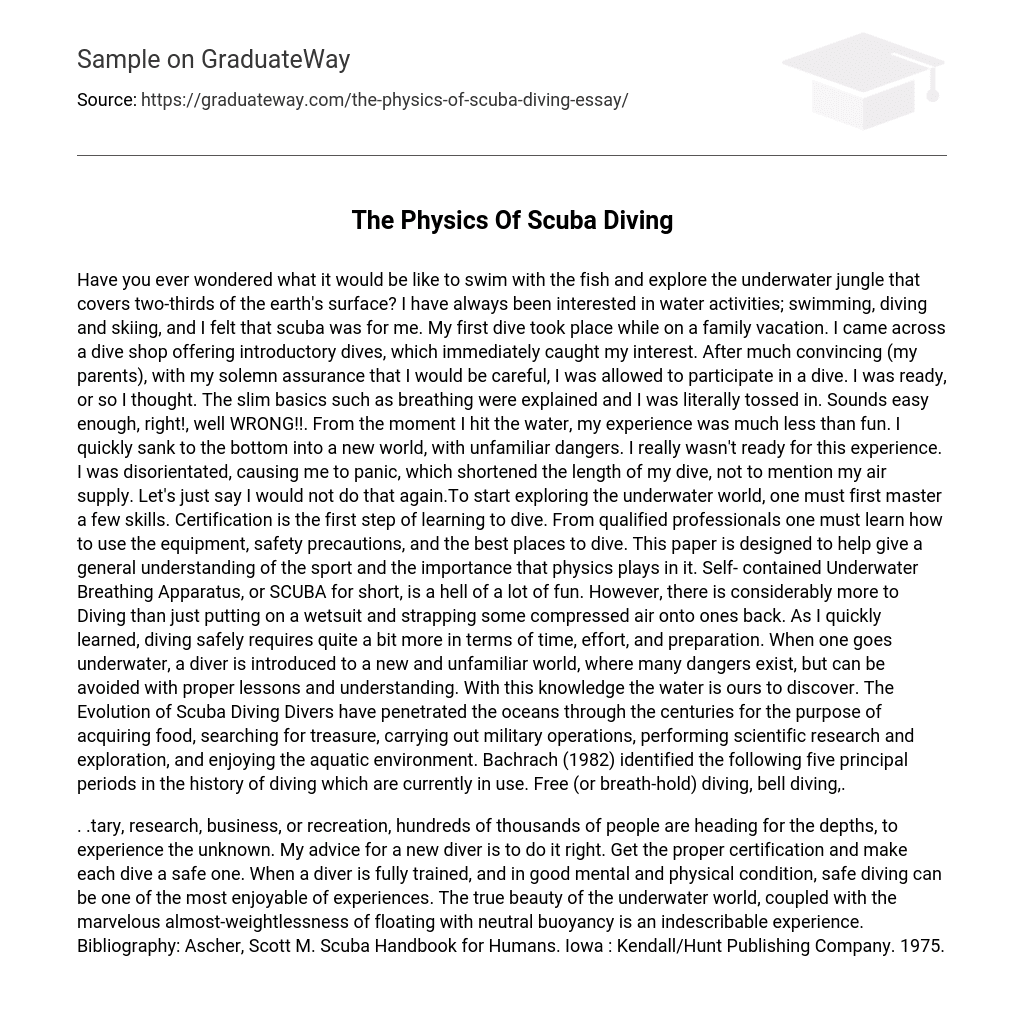Have you ever wondered what it would be like to swim with the fish and explore the underwater jungle that covers two-thirds of the earth’s surface? I have always been interested in water activities; swimming, diving and skiing, and I felt that scuba was for me. My first dive took place while on a family vacation. I came across a dive shop offering introductory dives, which immediately caught my interest. After much convincing (my parents), with my solemn assurance that I would be careful, I was allowed to participate in a dive. I was ready, or so I thought. The slim basics such as breathing were explained and I was literally tossed in. Sounds easy enough, right!, well WRONG!!. From the moment I hit the water, my experience was much less than fun. I quickly sank to the bottom into a new world, with unfamiliar dangers. I really wasn’t ready for this experience. I was disorientated, causing me to panic, which shortened the length of my dive, not to mention my air supply. Let’s just say I would not do that again.To start exploring the underwater world, one must first master a few skills. Certification is the first step of learning to dive. From qualified professionals one must learn how to use the equipment, safety precautions, and the best places to dive. This paper is designed to help give a general understanding of the sport and the importance that physics plays in it. Self- contained Underwater Breathing Apparatus, or SCUBA for short, is a hell of a lot of fun. However, there is considerably more to Diving than just putting on a wetsuit and strapping some compressed air onto ones back. As I quickly learned, diving safely requires quite a bit more in terms of time, effort, and preparation. When one goes underwater, a diver is introduced to a new and unfamiliar world, where many dangers exist, but can be avoided with proper lessons and understanding. With this knowledge the water is ours to discover. The Evolution of Scuba Diving Divers have penetrated the oceans through the centuries for the purpose of acquiring food, searching for treasure, carrying out military operations, performing scientific research and exploration, and enjoying the aquatic environment. Bachrach (1982) identified the following five principal periods in the history of diving which are currently in use. Free (or breath-hold) diving, bell diving,.
. .tary, research, business, or recreation, hundreds of thousands of people are heading for the depths, to experience the unknown. My advice for a new diver is to do it right. Get the proper certification and make each dive a safe one. When a diver is fully trained, and in good mental and physical condition, safe diving can be one of the most enjoyable of experiences. The true beauty of the underwater world, coupled with the marvelous almost-weightlessness of floating with neutral buoyancy is an indescribable experience. Bibliography: Ascher, Scott M. Scuba Handbook for Humans. Iowa : Kendall/Hunt Publishing Company. 1975. Cramer, John L. Ph.D. Skin and Scuba Diving: Scientific Principles and Techniques. N.Y.: Bergwall Productions, Inc. 1975. Ketels, Henry & McDowell, Jack. Safe Skin and Scuba Diving, adventure in the underwater world. Canada : Little, Brown and Company (Canada) Ltd. 1975. Koelzer, William. Scuba Diving, How to get started. Pennsylvania :Chilton Book Company. 1976. Resneck, John Jr. Scuba, Safe and Simple. New Jersey : Prentice-Hall, Inc. 1975. Tillman, Albert A. Skin and Scuba Diving. Iowa : Wm. C. Brown Company Publishers. 1966.





